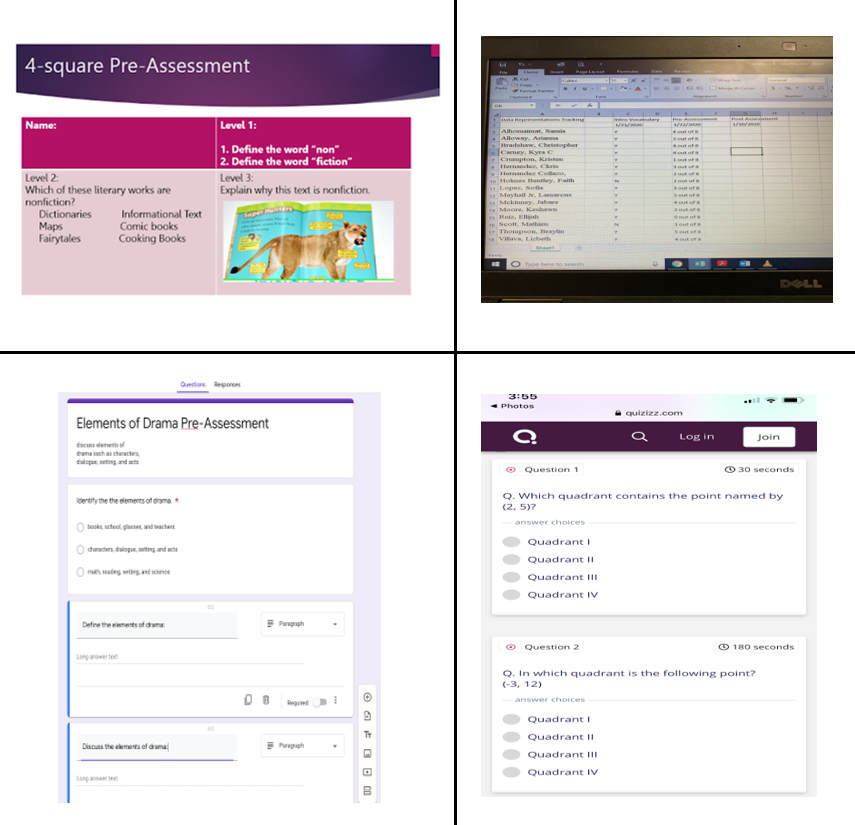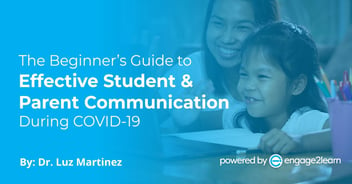How Pre-Assessments Ease the Burden of Distance Learning | engage2learn
The COVID pandemic necessitated significant changes in the way Americans do business, get essential goods, engage in entertainment, and educate our children, as government-ordered quarantine and social distancing was put in place to stop the spread of the virus. This difficult moment of quarantine and social distancing can result in a lot of stress, particularly for educators that had to switch gears to a virtual classroom overnight. Now, more than ever, it is important to prioritize best practices that are essential while using teacher coaching strategies and the tools provided through technology tools for distance learning.
In the classroom, one of the best practices that ensure learning for every student is differentiation and scaffolding, and the same is true for at-home schooling too. Differentiation focuses upon adapting instruction to meet the needs of individual students to best assist them in understanding a concept. Scaffolding is not so much an adaptation method as it is a concept-building process. Scaffolding is a step-by-step process in which primary skills must first be activated to lead into secondary skills.
Both differentiation and scaffolding rely on understanding what prior knowledge students already possess to know the foundational gaps that need to be filled in. With the advent of distance learning, new strategies were needed to provide that information. One effective strategy that has emerged to ease the burden of distance learning is the use of pre-assessments. In my years in the classroom and as an e2L coach helping to implement instructional coaching in schools, I have repeatedly observed how implementing pre-assessments allows for the most accurate approach to differentiated instruction.There are definitely mixed emotions when it comes to pre-assessments. During teacher coaching, I have had teachers share how it is not a practice they use because it feels like “just another test.” I have also had teachers share how they feel like pre-assessments are discouraging because students get everything wrong. As a result of these and other misconceptions, many teachers simply do not leverage pre-assessment as a tool for designing high-quality learning experiences for students.
One of the primary advantages of pre-assessments in distance learning is their ability to identify knowledge gaps in students. By administering pre-assessments at the beginning of a course or unit, educators can gauge students' existing understanding of the subject matter. This information enables teachers to tailor their instruction to address specific areas of weakness, ensuring that students receive targeted support and resources. Identifying knowledge gaps early on can prevent students from falling behind and promote a more efficient and effective learning process.
A true pre-assessment is an assessment that gauges, where students are before any instruction has been given. If instruction has been delivered, you can do a formative assessment, but it is too late to give a pre-assessment on that particular standard. With the limited time and online resources available, implementing pre-assessments can be done seamlessly in the virtual classroom. The key here is not to just generally pre-assess students on questions you know they will get wrong, but to implement a leveled pre-assessment.
Creating a Leveled Pre-Assessment
The leveled pre-assessment is simple to implement yet incredibly informative. You take the standard you are going to cover and level it. If you are going to cover the standard where students have to identify and explain erosion, your level one square will ask them to basically identify erosion. You can add three photos with only one being erosion, and they have to select the correct one for level one. Level two can ask students to explain how erosion occurs. Finally, level three is for the actual state standard, where you ask them to identify and explain erosion and how it is relevant to our earth today.
NOTE: It is important for you to locate your standard’s verb on the Bloom’s to determine what level it is. Then you move two levels down to create your level one question, then move up one from that to create your second-level question. You can see more teacher-generated examples below.
As I was coaching teachers, teachers that have used this method have shared how they will use it for every standard because it was easy and quick to get crucial information about where students are. They were able to differentiate their instruction to meet students where they are and, also challenge students that already have mastery of the standard.
A teacher shared, “I was surprised at how much my students knew about gravity before any instruction took place. I realized that I would have spent a lot of unnecessary time covering vocabulary, had I not used the leveled pre-assessment, when the majority already had the vocabulary and needed to go more in-depth with the concept,” reflected Ms. Viator from Arlington ISD.
By identifying what students already know, educators can skip or modify content that students have already mastered. This identification process through pre-assessments eliminates the need for repetitive lessons, allowing teachers to allocate more time to challenging or new material. As a result, students can progress at a pace that suits their individual needs, making the most of their learning time.
Additionally, pre-assessment reduces the workload for the teacher by allowing them to focus their lesson planning and instruction on what students need to learn in the curriculum and how best to support each student’s learning. Testing what students have learned from the instruction and content by the end of a lesson or unit then becomes a more authentic assessment of a student’s mastery of state required standards for their particular grade level.

Your Leveled Pre-Assessment
As you can see from the examples, it is a quick and simple way to identify all the levels of learners and fill in the gaps in order to move them to level three mastery of the state standard. One of my favorite quotes from a math teacher in Longview during a personalized coaching session, “I realized how many students already knew the content, and I could see where my struggling students needed support, all from one five-minute leveled pre-assessment. This helped me be proactive in my planning and not reactive.”
Online Tools for Creating Pre-Assessments:
Using Google forms, you can create a four-question pre-assessment to determine what level of the standard students are currently in. Then you can assign students’ work according to the level they score to ensure they are able to reach mastery.
Quizizz is a great online tool to create a quick pre-assessment quiz to know what assignments to assign to each student according to their current level.
Kahoot is a great tool if you want to incorporate technology into your assessments.
Another great way to infuse technology into your pre-assessment practice is using nearpod.
If you’re unsure on how to use any of these online tools, you can YouTube tutorials for step-by-step instructions.
The Gift of Leveled Pre-Assessments
“The greatest gift pre-assessments have given me is time,” shared Ms. McIntyre. Time is what educators value the most. Since you know what level of instruction is needed by each student in your class, leveled pre-assessments will give you back time. There will no longer be wasted instructional time because everyone’s learning path will be made clear with this short pre-assessment.
Are you ready to discover how leveled pre-assessments can improve your instruction in the virtual classroom?



